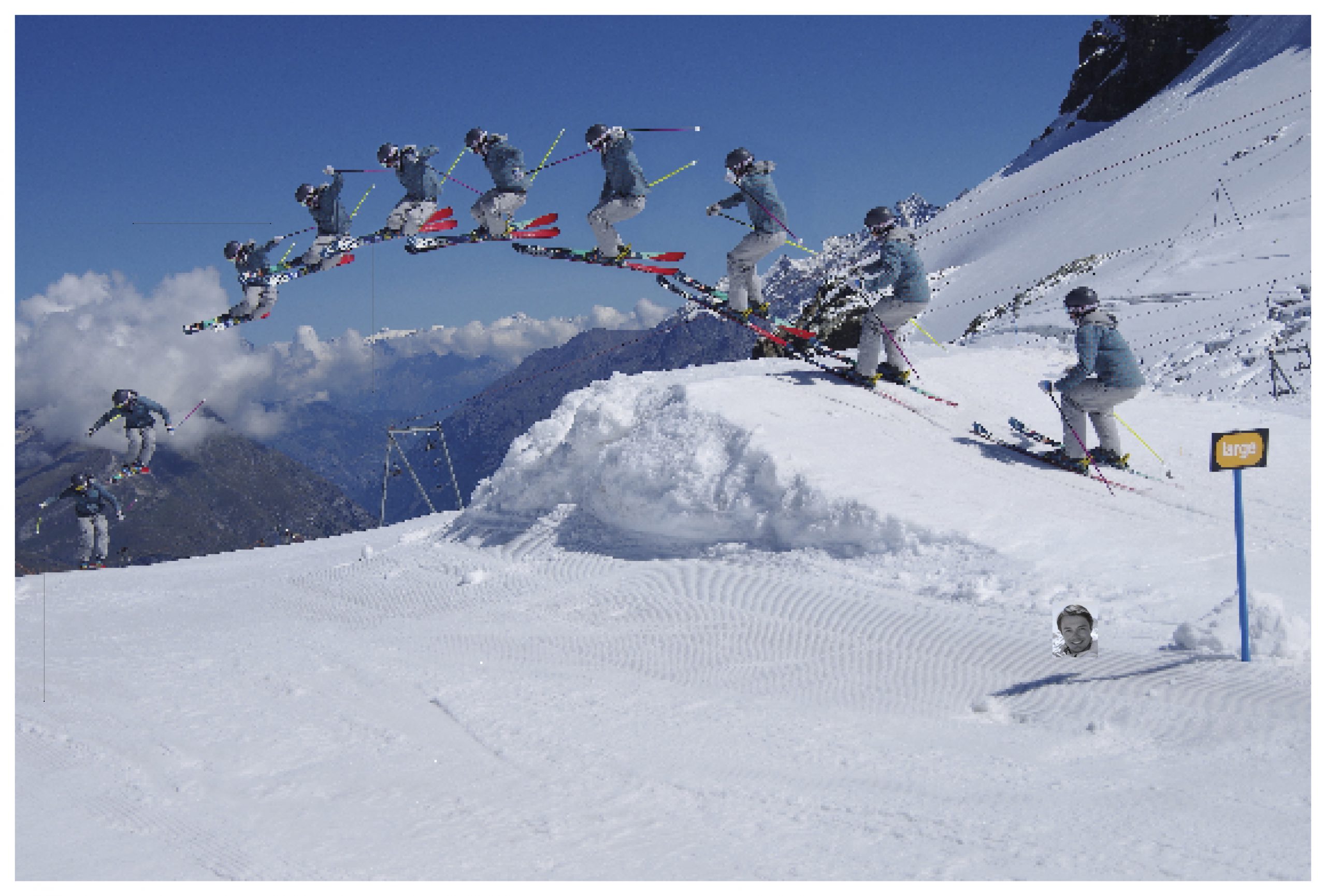How to… 180 Japan Grab


So, quite presumptuously, either you are a grom getting into ‘grab archaeology’, or you are getting jaded with your banger safety grab (on the right jump), or you’ve generally just got some good flexibility in your knees and you can twerk like Miley Cyrus.
The Japan grab was adopted (stolen) from snowboarding, which stole it from skateboarding, as is the way with most of the classic ski grabs these days. It is done by reaching your right hand behind your right knee and grabbing the inside edge of the left ski behind the boot (or vice versa, left hand to right ski).
It’s a black magic grab. It shouldn’t be so cool. But it is. It is simple, yet rad; one that feels sweet to pull off. In fact, it’s one of my favourite grabs and looks pretty cool when it’s put into even basic flips and rotations. I like to add it into a 180 spin, because it’s an easy grab to reach and balances you out perfectly for a slow rotation over a good-sized kicker. As with most things it’s best to start small and work your way up to the bigger kickers.
You can try it with zero rotation first but why waste time? Heck, go big or go home – so throw it with a 180. We’re assuming here that you can already do a 180 competently – if not, best master that first (see issue 140 from the Fall-Line archives-of-dreams for a step-by-step guide).
Photo: Jordan KevahYou’ve chosen your jump/kicker. First things first, do a simple straight air off the jump to get a feel for the transition and how much speed you need to clear it comfortably.
Assuming you have the speed sorted, you need to make sure you approach the jump no differently to how you would do a simple straight air. Many people go slower when trying a trick for the first time, DON’T! If you cleared it perfectly with a straight air, then go exactly the same speed.
As you approach the jump bend your knees, then as you rise up the lip extend your legs, or ‘pop’, with a slight set in the direction you want to rotate. Try not to throw it too hard, especially on bigger jumps. You will be surprised with how little set you need. The most common error with basic rotations is setting it too hard and too early. Planting your pole just before you take off can help initiate the spin too.
Once airborne and the rotation is set you need to go for the grab. Bring your knees up underneath you and send both feet out to the side slightly. If you are rotating left then the feet want to go to the right, so that they are on the outside of the rotation. If you are spinning right then the feet go to the left. This brings them closer to your grabbing hand.
Grab just behind the heel of the inside edge of the ski with as many fingers as possible. Most people will grab with either two or three fingers, but the more you grab with the better hold you get. You can see the hand that is not grabbing is extended out for balance in the air. This usually happens naturally.
Spot the landing and make sure the skis are facing down the hill. Try to stay, strong especially in your back. Flex the ankles and knees to absorb the shock – this helps with a more solid switch landing. For extra style points, remember to ride away switch for a bit, rather than reverting back around forwards too early!
You will notice from the photos that I keep my vision focused on the landing throughout the whole trick. I find I can control my rotation better this way, but it’s down to personal preference. Some people prefer to look back up at the take-off. Give both ways a go and decide which feels best for you.
Name: Andy Bennett
Age: 33
Sponsors: Ellis Brigham, Faction Skis
Number of years riding: 28
Exciting stuff: Andy’s ski career began at the age of four, when he joined the local dry ski slope race club. Aged 10, he entered his first mogul competition. Despite coming last and crashing in front of the judges, Andy fell in love with mogul skiing and stuck at it, representing Great Britain for several years. Andy soon swapped his bump skis for twin tips and drifted into the emerging freestyle ski scene. He competed at World Cup Halfpipe for several years and managed to break into the top 16 worldwide during his peak.
Today, Andy spends most of his time coaching, working with many national team members, often on an individual basis. He also models for the Ellis Brigham White Book catalogue each winter, and he recently became a dad, “which means I have to make sure I go upside-down on skis at least once every year to keep my ‘rad dad’ status!”